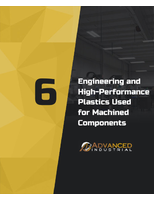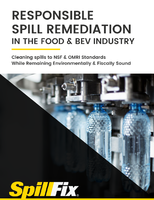Spectrometer is responsive from 200-1100 nm.
Press Release Summary:
 Model HR4000 has 3648-element CCD-array detector that enables optical resolution of 0.02 nm. It features dynamic range of 2.5 x 109 and signal-to-noise of 2500:1 for single integration period. Integrated onboard module has 10 user-programmable digital I/O lines, 13-bit analog input, 9-bit analog output, and pulse generator for triggering other devices. USB 2.0 interface enables full spectral scans into memory every 4 msec.
Model HR4000 has 3648-element CCD-array detector that enables optical resolution of 0.02 nm. It features dynamic range of 2.5 x 109 and signal-to-noise of 2500:1 for single integration period. Integrated onboard module has 10 user-programmable digital I/O lines, 13-bit analog input, 9-bit analog output, and pulse generator for triggering other devices. USB 2.0 interface enables full spectral scans into memory every 4 msec.Original Press Release:
Ocean Optics Introduces Next Generation of High-resolution Spectrometers
HR4000 Spectrometer has new CCD-array detector for optical resolution of 0.02 nm (FWHM)
Dunedin, Fla., July 2004 -- The HR4000 High-resolution Miniature Fiber Optic Spectrometer from Ocean Optics is a novel combination of optics and electronics that provides users with excellent optical resolution and high spectral response in a single unit, and is ideal for applications such as wavelength characterization of lasers, absorbance of gases, and determination of elemental atomic emission lines.
The HR4000 Spectrometer has a 3648-element CCD-array detector that enables optical resolution as precise as 0.02 nm (FWHM), making it especially useful for applications where closely aligned spectral features must be resolved. The spectrometer is responsive from 200-1100 nm, although both spectral range and optical resolution will vary by the user's selection of a diffraction grating (there are 13 options) and an entrance slit (available in widths of 5, 10, 25, 50, 100 or 200 microns). Other operating parameters of note are dynamic range of 2.5 x 109 and signal-to-noise of 2500:1 for a single integration period.
The HR4000's high-speed electronics have been designed for considerable flexibility in connecting to various modules and external interfaces -- including PCs, PLCs and other embedded controllers -- through USB 2.0 or RS-232 communications. The spectrometer's integrated onboard module has 10 user- programmable digital I/O lines for interfacing to other equipment; 13-bit analog input and 9-bit analog output; and a pulse generator for triggering other devices. In addition, the USB 2.0 interface enables full spectral scans into memory every 4 milliseconds.
Also significant is the HR4000's very fast spectrometer integration time of 10 microseconds, which provides two significant benefits. First, it allows users to measure transient events like laser pulses. Second, the ability to integrate the spectrometer for a brief duration eliminates many of the saturation problems that can occur in applications with very high light energy. For folks who remember "old-time" manual-adjustment 35 mm cameras, this is analogous to setting the camera's shutter speed to account for very bright light.
The HR4000 operates via USB interface or via RS-232 interface and a single +5 VDC power supply. Because the HR4000 has an onboard microcontroller, operating parameters can be controlled through software. In fact, wavelength calibration coefficients unique to each spectrometer are programmed into a memory chip right on the spectrometer.
For more information, contact Ocean Optics, Inc., 380 Main Street, Dunedin, FL 34698, 727.733.2447, Fax 727.733.3962, Info@OceanOptics.com. Or visit our website at OceanOptics.com.
Ocean Optics, Inc. is a diversified electro-optics technology firm and a global leader in optical sensing, display optics and biophotonics technologies. With locations in the United States and Europe, the company serves a wide range of markets, including consumer electronics, environmental monitoring and medical diagnostics. The company has sold more than 45,000 of its revolutionary miniature fiber optic spectrometers worldwide and enabled nearly as many applications. Ocean Optics is part of the multinational Halma Group of safety and detection companies.




